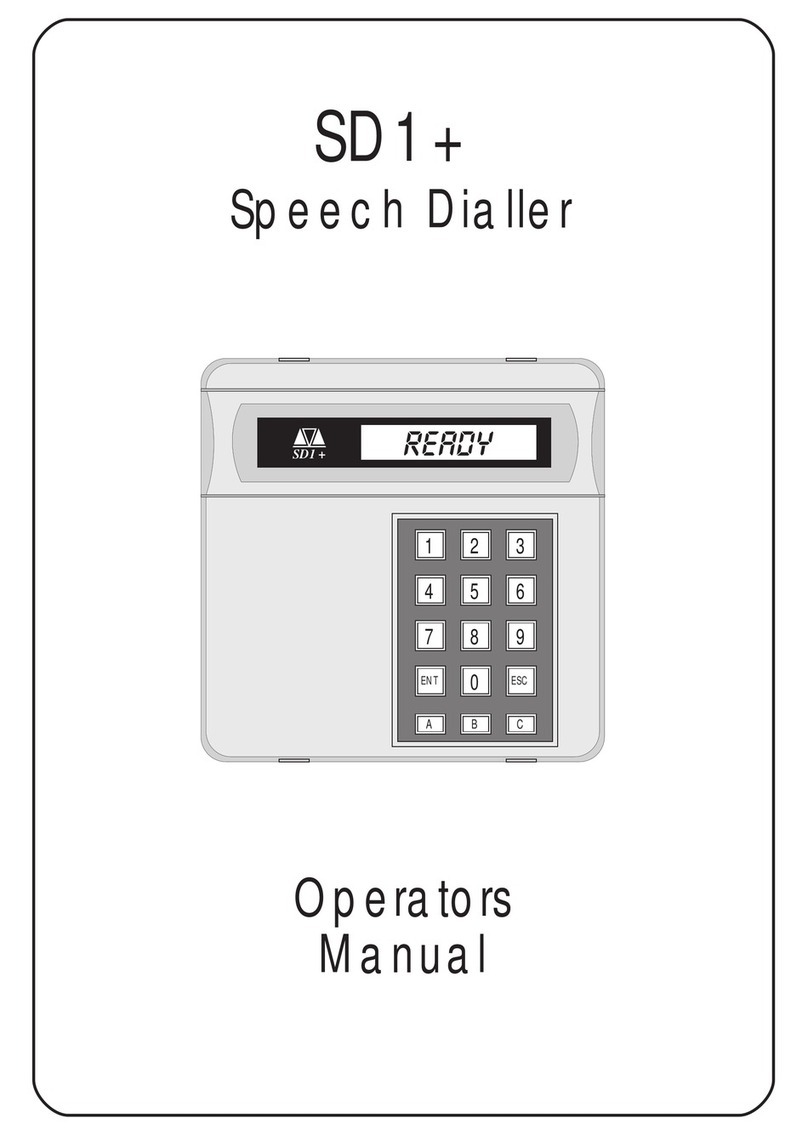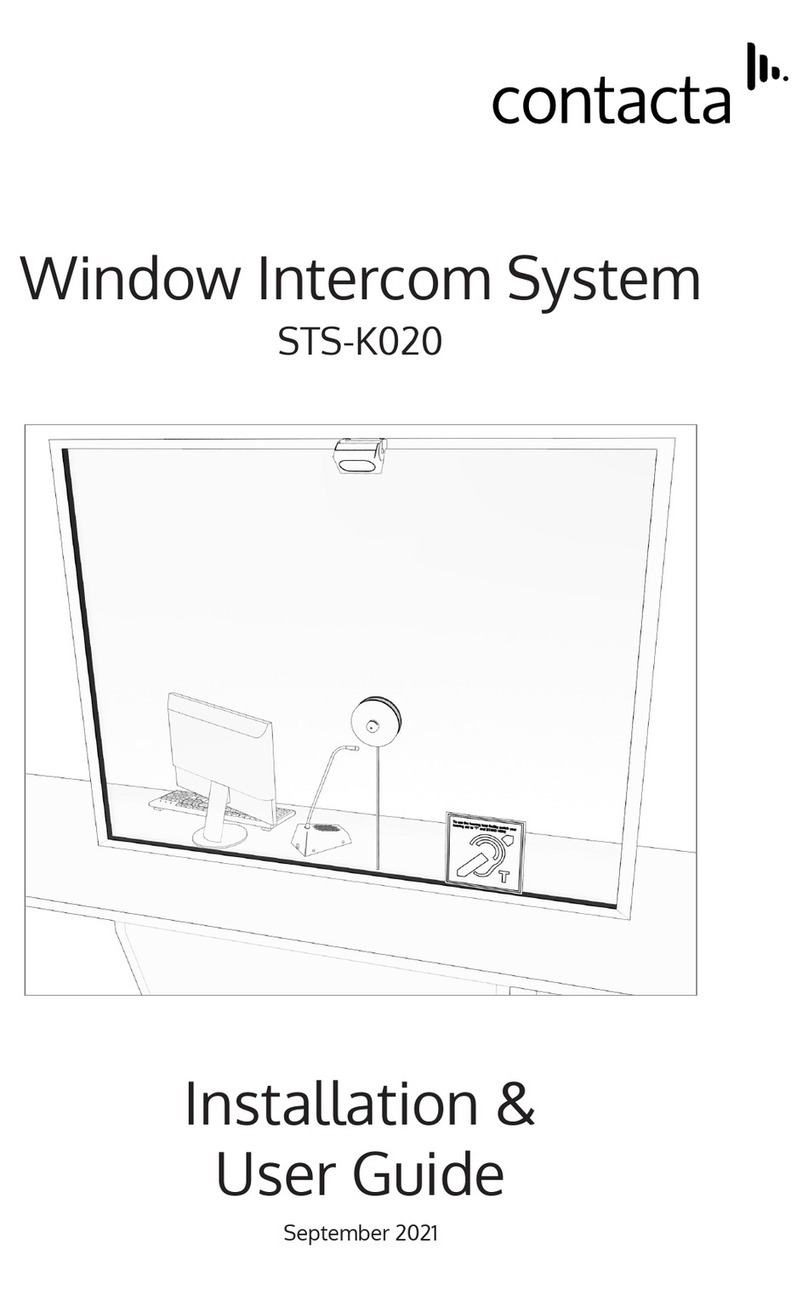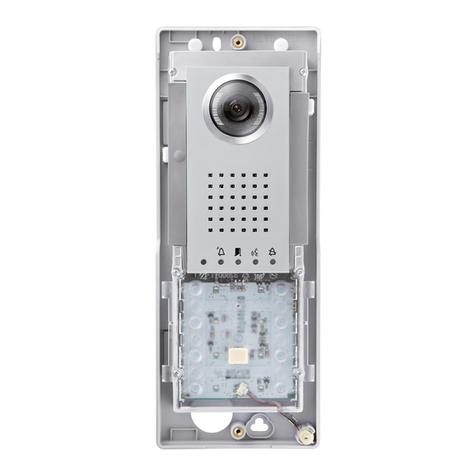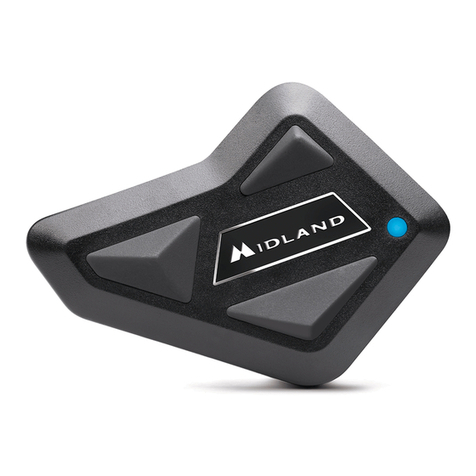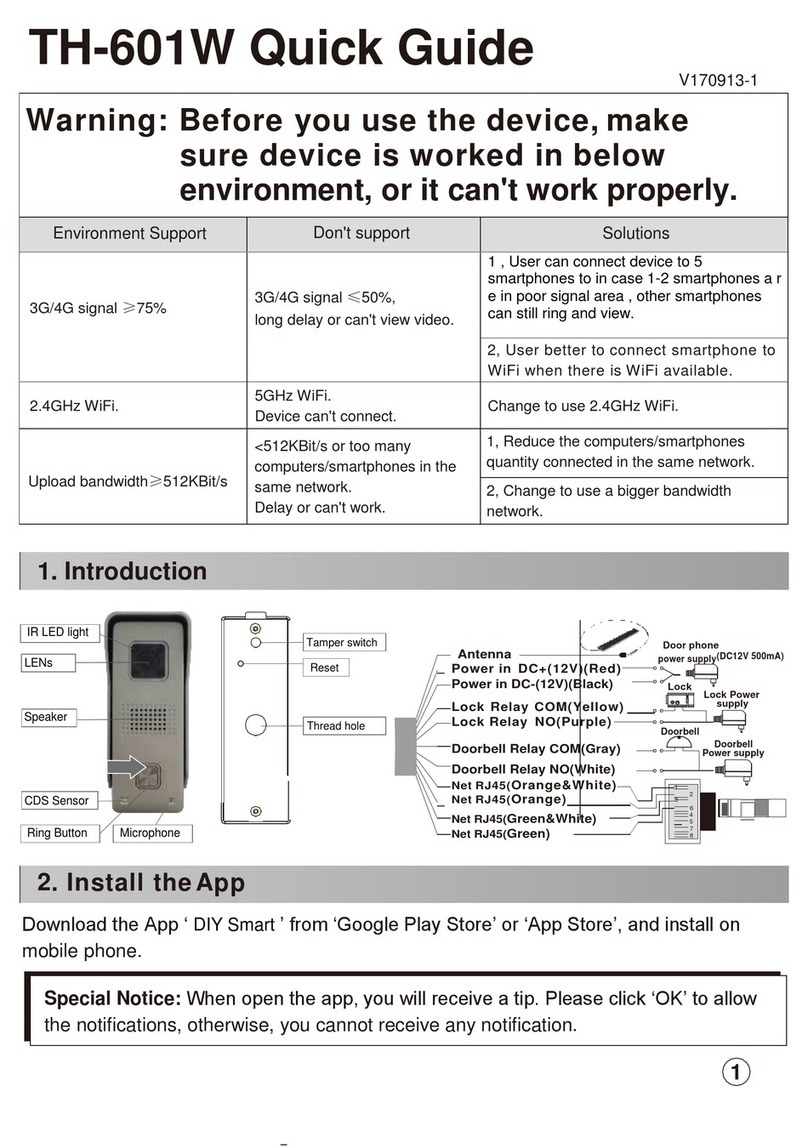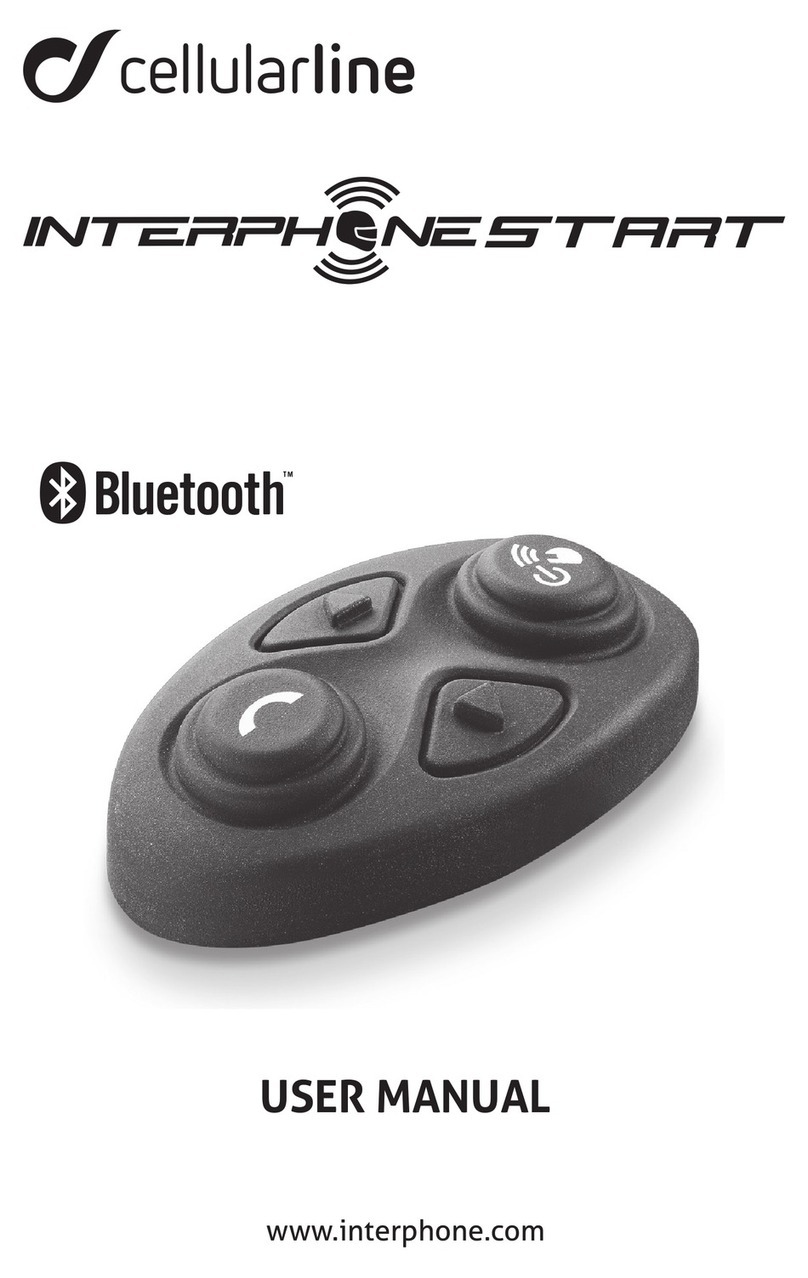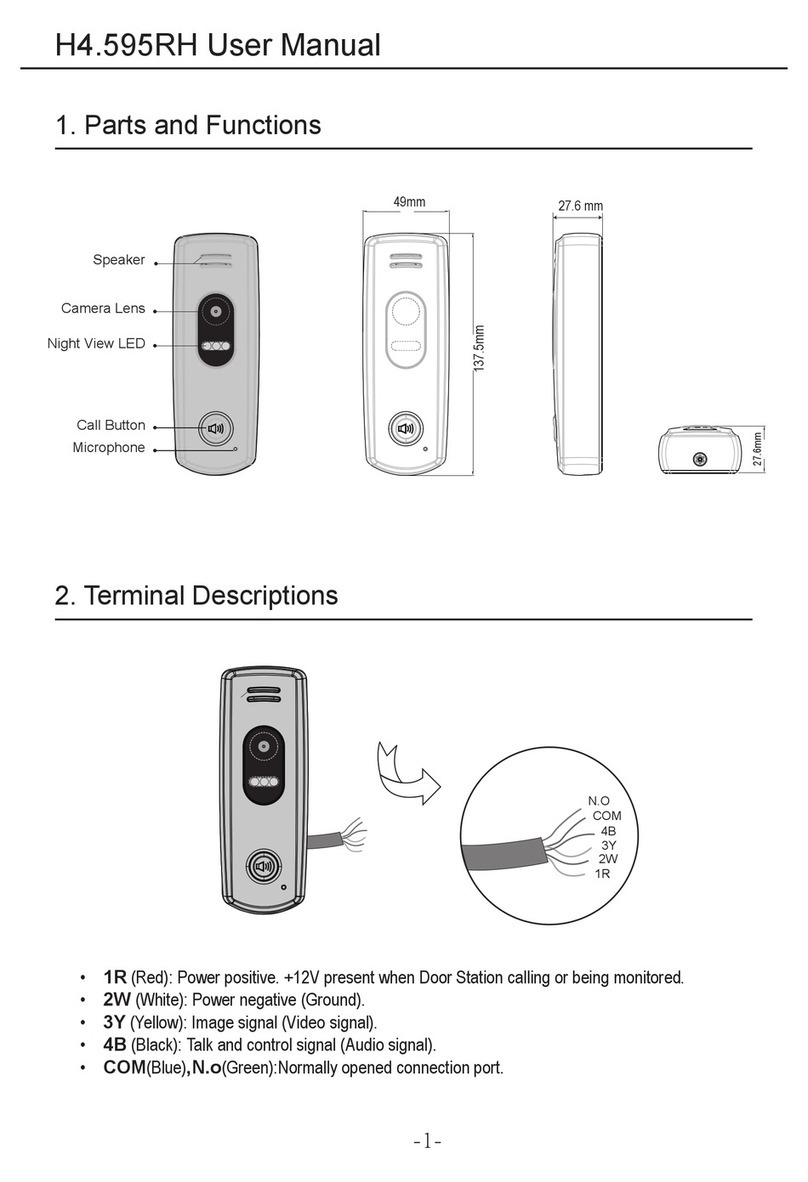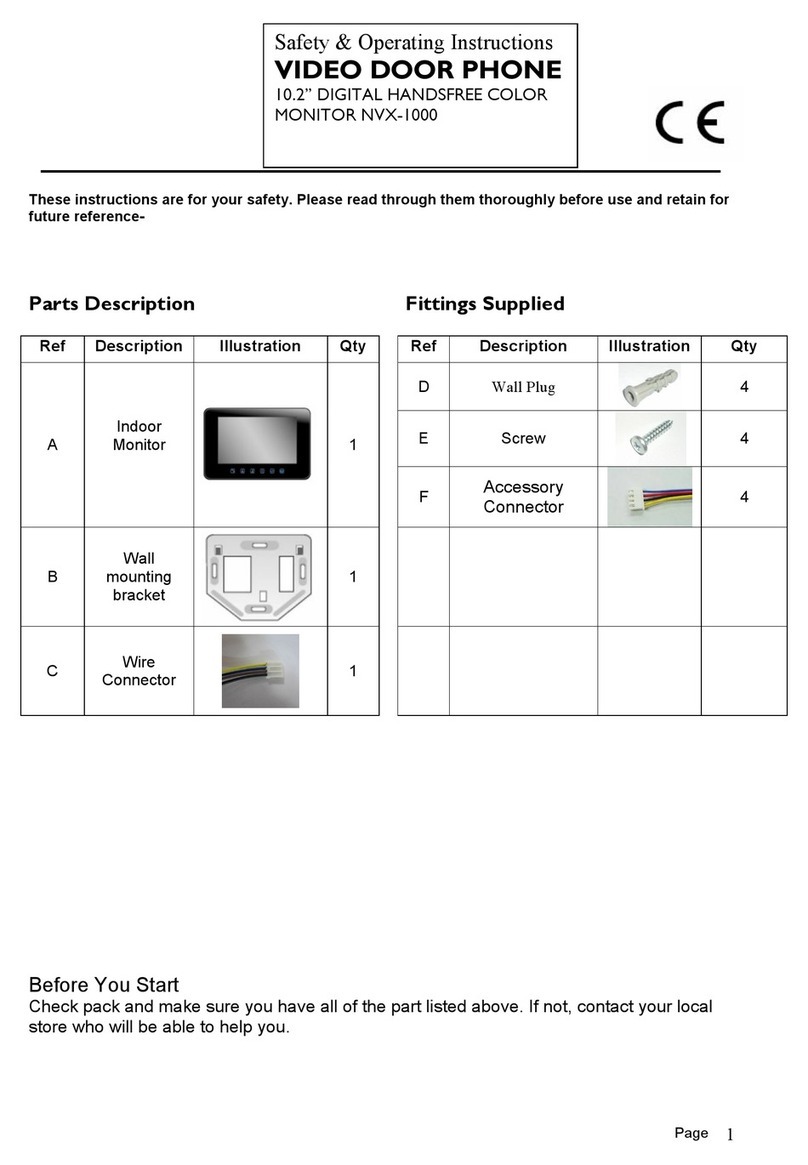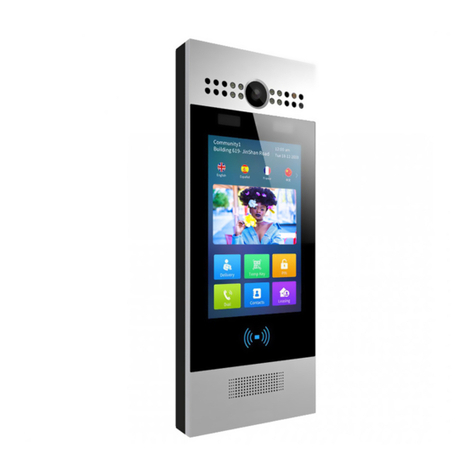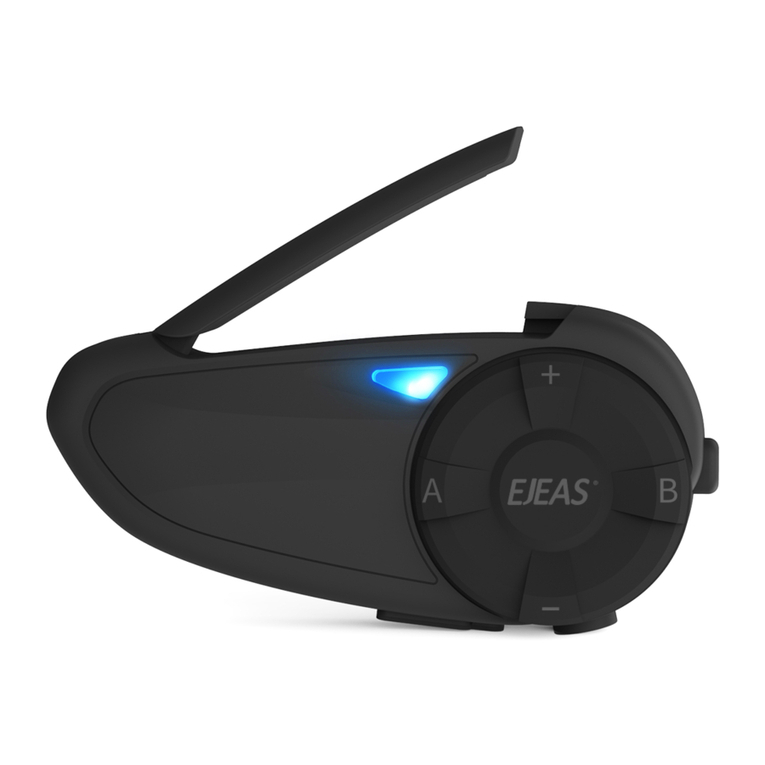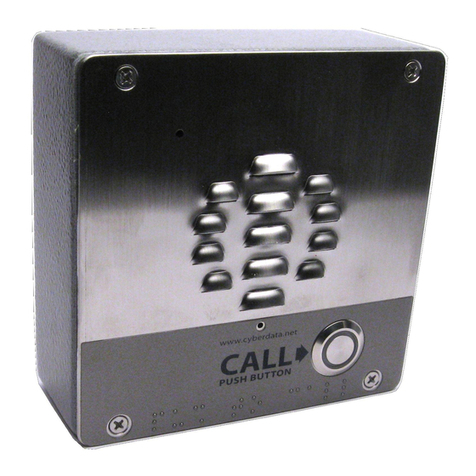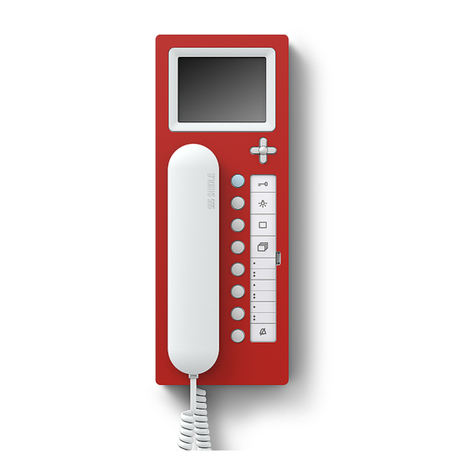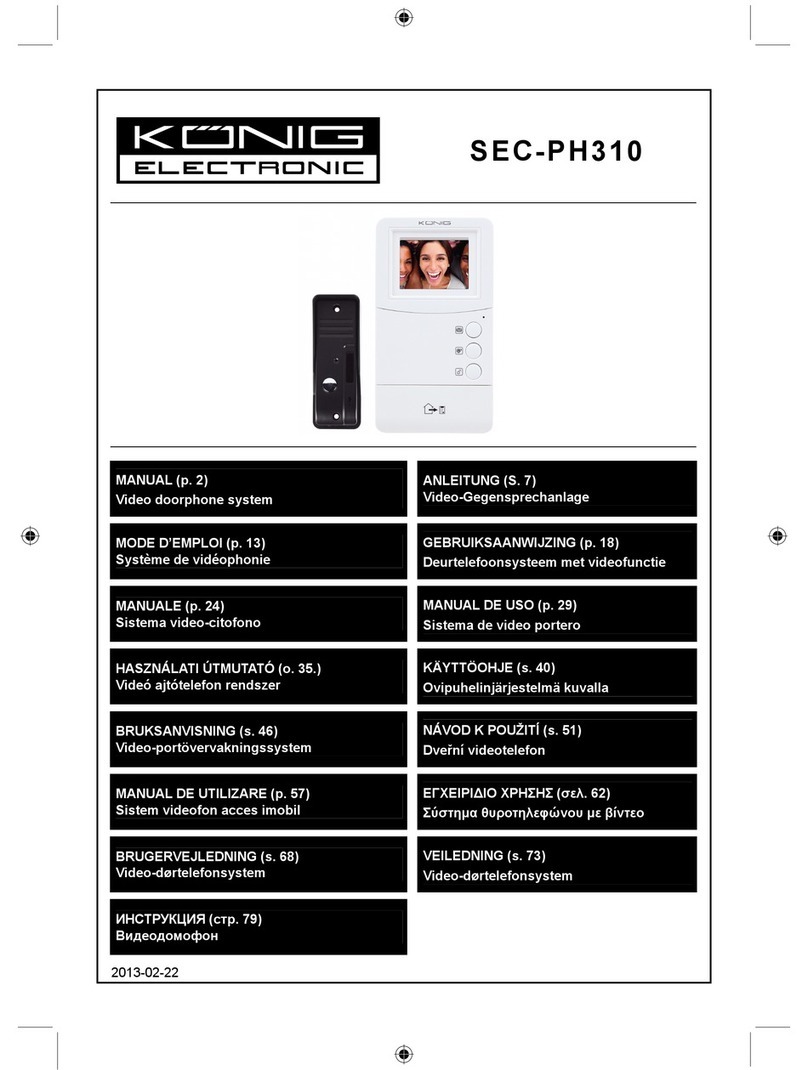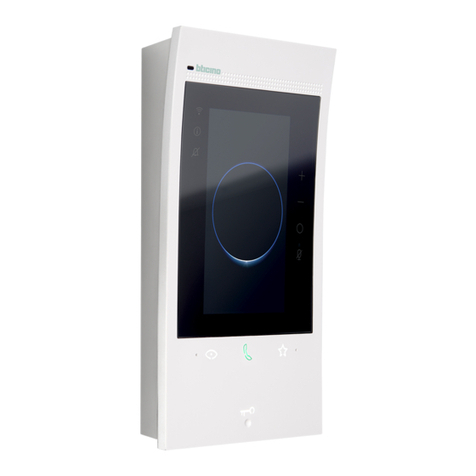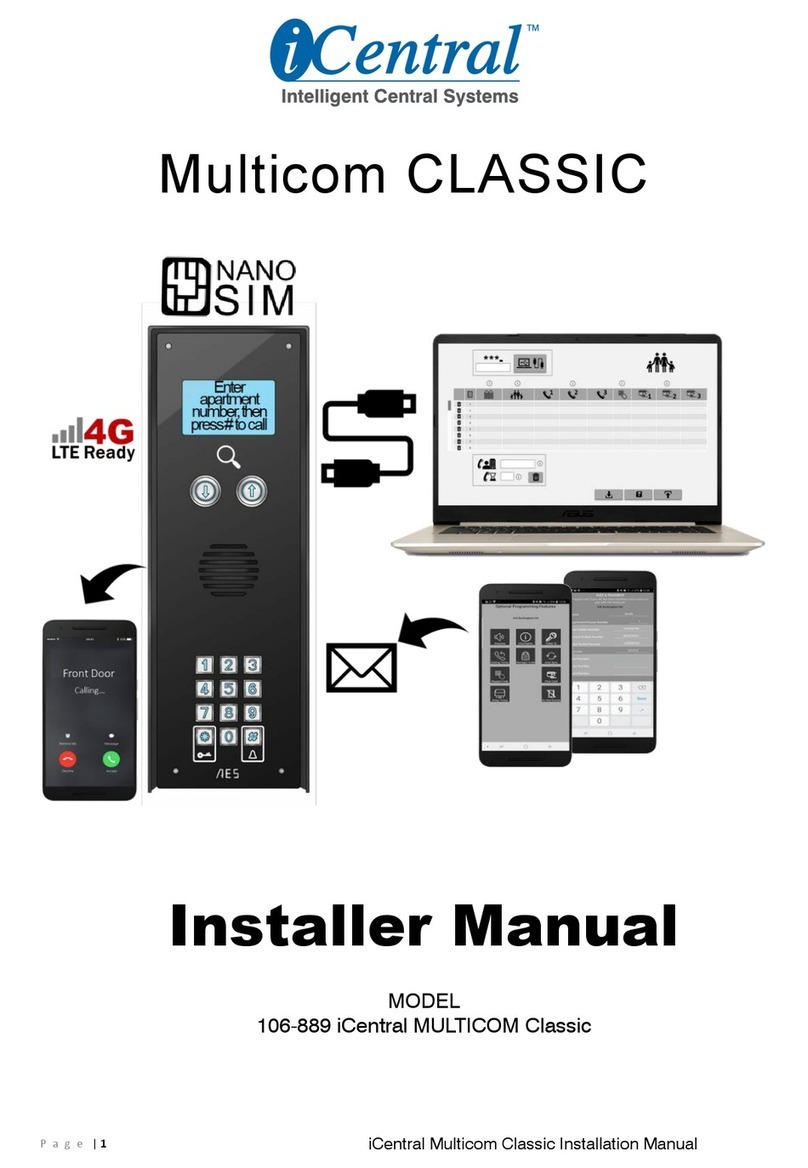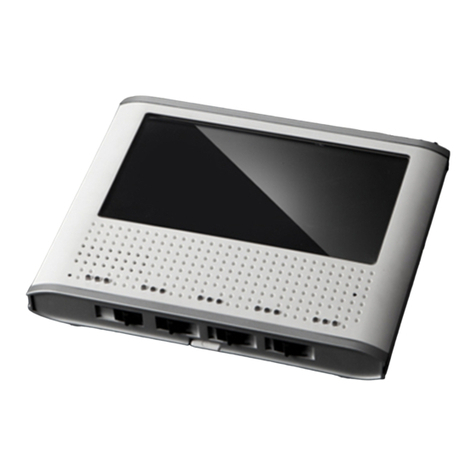Menvier Security SD1 User manual

SD1
SPEECH DIALLER
OPERATING
INSTRUCTIONS
B CA
ENT 0ESC
7 8 9
5 64
1 2 3
SD1

CONTENTS
Section Title Page
1 Overview................................................1
2 InitialisingtheSD1.........................................2
3 Programming Telephone Numbers . . . . . . . . . . . . . . . . . . . . . . . . . . . 2
4 RecordingMessages......................................3
5 MessageReplaying.......................................4
6 Call Acknowledgement Procedure . . . . . . . . . . . . . . . . . . . . . . . . . . . 4
7 SendingaTestCall........................................4
8 TestActivation............................................6
9 Changing the Acknowledgement Option . . . . . . . . . . . . . . . . . . . . . . 7
10 ViewingtheLastCallLog...................................8
11 CancellinganActivation...................................8
12 Trouble-ShootingGuide....................................9
13 QuickReferenceGuide....................................10
B.18068 Drg No.33:1159:00 Iss 04. Doc 02

1. Overview
Connections: The SD1 is connected between the alarm control panel and the telephone
line. It behaves like another extension to the telephone and does not affect its normal
operation or that of any other extension fitted. However, if the SD1 is operating the messages
will be heard if any handset is lifted. The unit requires no batteries as its power and mains fail
back-up are derived from the alarm control panel.
The SD1 accepts three inputs which in our example are; A - Personal Attack (PA), B - burglary
and C - fire. These correspond to the messages (A, B and C) that the SD1 sends out and
should be recorded as such. If the control panel does not have a fire monitoring capability
then the SD1 will accept a direct connection from a suitable smoke alarm (as above). The
SD1 may also be included in the control panel tamper circuit.
Telephone Numbers: The SD1 will dial up to three different telephone numbers and play its
message. The numbers may be up to 16 digits long and are simply programmed using the
text display and keypad on the unit.
Messages: The SD1 has a built-in microphone and speaker so that phrases can be
recorded and replayed directly from the unit. When the out-going call is answered the SD1
plays a common phrase (0) and one of the three alarm messages (phrases A, B or C).
Phrase 0 states your name and address and phrases A, B and C relate to the inputs from the
control panel (PA, burglary and fire in our example). Each phrase can be up to 8 seconds
long giving a total possible message length of 16 seconds (0 + A, B or C).
Acknowledgement: On receiving a call from the SD1 the person answering acknowledges
it by pressing the number [8] on their telephone*. The SD1 may be programmed to stop dialling
after the first call has been acknowledged or when two or three have been acknowledged, as
required.
If the message is not acknowledged then it is repeated four times after which the dialler
abandons the call. It then dials the next number. This procedure is repeated three times in
sequence for all three telephone numbers. If no acknowledgement has been received
then the dialler shuts down.
* Certain older types of telephone may require a tone dialling simulator to do this.
Page 1
SD1 Operating Instructions
BA
C
Control Panel Speech Dialler BT Line
Tel No 1
Tel No 2
Tel No 3
Telephone

2. Initialising the SD1
When the SD1 is switched on the display will show "PLEASE RE-RECORD" and the unit will beep
every 30 seconds. This indicates that the memory is blank (i.e., all telephone numbers and
messages are blank).
Displayshows"PLEASERE-RECORD"whenunit
is first switched on.
When initialised the display shows "READY",
the unit can now be programmed and
tested.
If the unit is not operated for 1 minute, it will
revert to its normal standby mode and the
display shows "-ON-".
3. Programming Telephone Numbers
The SD1 stores up to three telephone numbers with a maximum of 16 digits for each.
NOTE. Permission of the person(s) that are being called must be obtained before storing their
telephone number. The Emergency Services telephone numbers CANNOT be entered.
The following example shows how to set telephone number 1 as 081 1234567.
Ensure that the SD1 is initialised and the
display is showing "READY".
Pressing 1-3 selects telephone numbers 1, 2
or 3. 0-C selects phrases 0, A, B or C (see
section 4).
The display will alternate between "PHONE
No. 1" and the current telephone number
(Blank if the number has not been
programmed).
Pressing the Akey will clear the display if a
mistakeismadewhilstenteringthenumber.
Repeat for telephone number 2 and 3 as
required.
Page 2
SD1 Operating Instructions
READY
Press the [key for 6 secs
PLEASE RE-RECORD
Power switched on
-ON-
READY
ENTER 1-3 oOR 0-C
Press the [key
PHONE NO 1
Select No. 1,2or 3
(e.g., Press 1)
0811234567
Enter telephone No.
(e.g., 0811234567)
Press the [key to accept

Programming Telephone Numbers (Cont.)
When the SD1 dials a telephone number it will automatically select the correct dialling
format. In the U.K. there are two formats:
Pulse Dialling: This is the older format and is sometimes referred to as Loop Disconnect/LD.
Tone Dialling: This is the modern format and sometimes referred to as Multiple
Frequency/MF.
Any or all of the telephone numbers can be selected to override the automatic format
selection and be forced into dialling the number in one of the above formats if required.
Before entering the telephone number in the procedure, press the Bkey to select "Pulse
Dialling" (P) or press the Ckey to select "Tone Dialling" (T)
4. Recording Messages
The SD1 can record four phrases A, B, C and a common phrase 0. Each can be up to eight
seconds long and the four phrases are used to form three messages A, B and C:
Message A = phrase 0 + phrase A.
Message B = phrase 0 + phrase B.
Message C = phrase 0 + phrase C.
Phrase 0 is normally used to store the name and address of the premises, whereas phrases A,
B and C is normally used to store the type of alarm condition, e.g.,
Phrase 0: “This Is Mr Smith, at 10 The Strand, East Fincham”
Phrase A: “There is a Fire Alarm condition, there is a Fire Alarm condition”
Phrase B: “There is a Personal Attack Alarm, there is a Personal Attack Alarm”
Phrase C: “There is an Intruder Alarm condition, there is an Intruder Alarm condition”
Before you record phrases it is advisable to prepare them first by writing them down. The
following example shows how to record the common phrase 0:
Ensure that the SD1 is initialised and the
display is showing "READY"
Pressing the 0,A,Bor Ckey, selects
phrases 0, A, B, or C.
Stand back about 6-8 inches from the unit.
When ready press the [key to start
recording, speak clearly into the unit. The
displaywillcountdowntheremainingtimein
seconds. If the phrase is less than eight
secondsyoucanpressthe]keytoendthe
recording.
Repeat for phases A, B and C, as required.
Page 3
SD1 Operating Instructions
READY
ENTER 1-3 OR 0-C
Press the [key
RECORD PHRASE 0
Select Phrase 0,A,Bor C
(e.g., Press 0)
RECORDING-8
Press the [key to
start recording
RECORDING-0

5. Replaying Messages
Once the phrases have been recorded it is possible to play them back through the built in
loudspeaker.
The following example shows how to play back "Message A" (Phrase 0 + Phrase A):
Ensure that the SD1 is initialised and the
display is showing "READY".
After a short delay the display will show
"PLAYING PHRASE 0", then "PLAYING
PHRASE A".
Repeatformessages BandC,asrequired.
6. Call Acknowledgement Procedure
When the call is answered, the message is played. At the end of its message the SD1 sends
an audible "beep" which must be answered within 2 seconds using the tone generated by
pressing the [8] button on a standard telephone. On hearing the [8] tone the SD1
immediately sends another "beep" which must be answered in the same way. If successful,
a multi-tone confirmation signal is then heard, if not then the message is repeated with the
acknowledgement "beeps" again.
Points To Note:
1. The SD1 will not acknowledge signals from Pulse Dialling telephones or those with
short duration tones. Check all recipients phones by calling them and getting them
to press their [8] button. If a series of clicks is heard (or the tone cannot be
sustained by holding down the button) then a Tone Dialling Simulator will be needed
to successfully acknowledge the SD1 messages (Contact your installation company
for details).
2. No harm is done by not acknowledging the message as the unit simply repeats it
four times and then aborts the call.
3. The procedure is fast and should be practised by all recipients under test conditions.
The [8] button must be pressed within 2 seconds of each "beep" and should be
held down for between 12to 112seconds. If either tone is not 'seen" by the SD1 the
message is repeated again.
Page 4
SD1 Operating Instructions
READY
Press the Akey
PLAYING PHRASE 0
PLAYING PHRASE A

7. Sending A Test Call
It is possible to test that each message plays to each of the telephone numbers. e.g., you
may want to test that "Message A" plays to telephone number 1 or "Message B" to telephone
number 3 etc.
Before sending a test call it is very important that the person that is being called is familiar
with the Call Acknowledgement Procedure. This will ensure that the SD1 is successfully
cleared down.
If the SD1 is not cleared down when it is triggered from the alarm panel it will either dial the
next telephone number (if one is programmed) or re-dial the first telephone number a further
two times.
The following example shows how to send "Message A" to telephone number 1:
Ensure that the SD1 is initialised and the
display is showing "READY".
Dialling telephone No. 1
The unit waits until the phone being called is
ringing.When theunit detects theringing the
display will show "RINGING". If ringing is not
detectedwithin5secondstheunitwillstartto
play the message.
The unit plays phrase 0 (Name & Address)
then the alarm phrase A (e.g., Fire Alarm
etc.). At the end of phrase A, the person
receiving the call should carry out the Call
Acknowledgement Procedure.
If the call is successfully acknowledged the
display will show "CALL SUCCESSFUL". If the
person receiving the call fails to
acknowledge it on the first attempt the unit
will repeat the message four times, giving
them the opportunity to acknowledge the
callatthe endofeachmessage.Howeverif
at the end of the last attempt they still fail to
acknowledge the call the display will show
"NO REPLY". The unit will clear down for 6
seconds,thenre-dialthe telephonenumber
a further two times.
Repeat for other test call combinations as
required.
Page 5
SD1 Operating Instructions
READY
SENDING A TO NOo1
press the Akey then the 1key
RINGING
PLAYING PHRASE 0
PLAYING PHRASE A
CALL SUCCESSFUL
Test calls may be cancelled at any
time by pressing the ]key.

8. Test Activation
When the unit is triggered on one of the inputs A, B or C the display will show "-ON-" throughout
the procedure. This test option allows you to test trigger one of the three inputs A, B or C. In
the test mode the display will show the unit's actions.
The following example shows how to simulate a trigger on input A. The Acknowledgement
option is set to "CLEARED BY ANY 1" (see page 7).
Ensure that the SD1 is
initialise and the display
shows "READY".
Page 6
SD1 Operating Instructions
READY
Press the Akey then the [key
SENDING A TO NO 1
Dialling telephone No.1
RINGING
Telephone is ringing
PLAYING PHRASE 0
Message A is played
PLAYING PHRASE A
Call acknowledged
NO REPLY
No reply or no
CALL SUCCESSFUL
SENDING A TO NO 2
Dialling telephone No.2
RINGING
Telephone is ringing
PLAYING PHRASE 0
Message A is played
PLAYING PHRASE A
NO REPLY
No reply or no
CALL SUCCESSFUL
Call acknowledged
SENDING A TO NO 3
Dialling telephone No.3
RINGING
Telephone is ringing
PLAYING PHRASE 0
Message A is played
PLAYING PHRASE A
NO REPLY
No reply or no Repeat from telephone No.1
(will attempt each No. 3 times.)
Test calls may be
cancelled at any time
by pressing the ]key.
CALL SUCCESSFUL
Call acknowledged

9. Changing the Acknowledgement Option
The SD1 acknowledgement can be set to one of the following options:
CLEARED BY ANY 1: The SD1 will clear down when the message is acknowledged
by any one of the three recipients.
CLEARED BY ANY 2: The SD1 will clear down when the message is acknowledged
by any two of the three recipients.
CLEARED BY ALL 3: The SD1 will clear down when the message is acknowledged
by all three recipients.
The default setting is "CLEARED BY ANY 1", which can be changed as follows:
Ensure that the SD1 is initialised
and the display is showing "READY".
Page 7
SD1 Operating Instructions
READY
Press the 0key
CLEARED BY ANY 1
Press the 0key
Press the [key
CLEARED BY ANY 2
Press the 0key
Press the [key
CLEARED BY ALL 3
Press the 0key
Press the [key

10. Viewing The Last Call Log
When a call is successfully acknowledged the SD1 stores the event in a "Last Call Log".
The log may then be viewed as follows:
Ensure that the SD1 is initialised and the
display is showing "READY".
The display will show the Last Call Log e.g.,
"SENT A to [-2-]" (Alarm on trigger input A
acknowledged by recipient 2). If the display
shows [---] then none of the calls was
acknowledged.
Press the ]key to return to "READY"
11. Cancelling an Activation.
Occasionally you may trigger your alarm by accident and cause the SD1 to send an
unwanted call. When this happens the unit cannot be stopped by pressing the ]key or any
of the other keys. Control of the SD1 is disabled until the call has been successfully
acknowledged or until the unit has cleared down after the final attempt.
However there are two actions you may try to ensure that the alarm is intercepted:
1. If a telephone is connected on the same line as the SD1 you may lift the handset
and talk over the top of the SD1 message. Advise the recipient of the call not to
respond to the alarm.
2. If a telephone is connected on the same line as the SD1 you may use it to
acknowledge the SD1 yourself (providing it is a tone type telephone).
Page 8
SD1 Operating Instructions
ENTER 1-3 OR 0-C
SENT A TO [-2-]
Press the [key
Press the ]key
READY
Press the [key

12. Trouble-Shooting Guide
Problem The unit will not dial the telephone number that I have programmed.
Cause Number incorrectly dialled
Action Check the telephone number you are calling has been entered correctly.
Problem When sending a Test call the display shows: N O R E P L Y
Cause The call was not answered or acknowledged by the recipient.
Action Ring the recipient and check they have followed the call acknowledgement
procedure.
Problem When sending a Test call the the display shows: E N G A G E D
Cause The recipient is on another call.
Action Wait until they have finished the call and try again.
Problem When sending a Test call the display shows: U N O B T A I N A B L E
Cause TheSD1hasdialledthe numberand detectedsomething otherthana"ringing"
or "engaged" tone (e.g., a B.T. or Cellnet recorded message).
Action Check the number using a normal telephone or try again.
Problem The unit is triggered from the Control Panel but the display shows: - O N -
Cause This is the normal response.
Action If you require to see the SD1 status condition when triggered, the use the "Test
Activations" option (see section 8).
Problem When the unit calls the recipient they can"t acknowledge the unit by pressing
the number [8] button.
Cause Incorrect acknowledgement procedure.
Action Instruct the recipient in the correct procedure (see section 6).
Cause Incompatible telephone.
Action Call the recipient and ask them to press the number [8] button on their
telephonefor 3 seconds. If you hear anything other than a 3 second tone, their
telephone is not capable of acknowledging the SD1.
This may be overcome by using a tone pad to simulate the modern dialling
tones. Contact your installation company for further details.
Problem The recipient has acknowledged the call but the SD1 continues to dial the
second or third number.
Cause The"AcknowledgementOption"issetto"CLEAREDBYANY2"or"CLEAREDBYALL
3".
Action Check the option is set to your required setting (see section 9).
Problem The SD1 "beeps" every 30 seconds and the display shows:
P L E A S E R E - R E C O R D
Cause The power supply to the SD1 has been interrupted.
Action Re-program all telephone numbers and messages as required (contact your
installation company for further advice if the the problem re-occurs).
Page 9
SD1 Operating Instructions

If the unit is not operated for 1 minute, it will revert to
its normal standby mode and the display will show
NOTE: When the unit is first switched on the display
shows "PLEASE RE-RECORD" and the unit beeps every
Test Activations
RECORD PHRASE 0
Press [to start
ENTER 1-3 OR 0-C
Select phrase:
0= Common
phrase.
A= Phrase A.
B= Phrase B.
C= Phrase C.
Press [
Recording Messages
RECORDING - 8
Speak clearly into the
unit. If message is less
than eight seconds in
length then press ]to
end recording
PHONE NO. 1
Enter telephone No.
(e.g., 0811234567)
Press Ato Clear
ENTER 1-3 0R 0-C
Select No. 1,2or 3
(e.g., Press 1)
Press [
Programming
Telephone Nos
018112345678
Press [to accept
PLAYING PHRASE 0
Select Message:
A= Phrase 0 + Phrase
A.
B= Phrase 0 + Phrase
B.
Replaying Messages
SENDING A TO NO.1
Message A is being sent
to telephone No 1.
For other message
combinations press B
then 2, C then 1 etc. as
required
Press Athen 1
Sending A Test Call
SENDING A TO NO.1
Message A is being sent
to telephone No 1.
Press Athen [
SENDING A TO NO.2
Message A is being sent
to telephone No 2.
SENDING A TO NO.3
Message A is being sent
to telephone No 3.
QUICK REFERENCE GUIDE
PLEASE RE-RECORD
READY
-ON- When the SD1 is not being used the display shows
"-ON-". To initialise it press and hold the [key for 6
PLAYING PHRASE A
Playing message A.
Other manuals for SD1
6
Table of contents
Other Menvier Security Intercom System manuals
